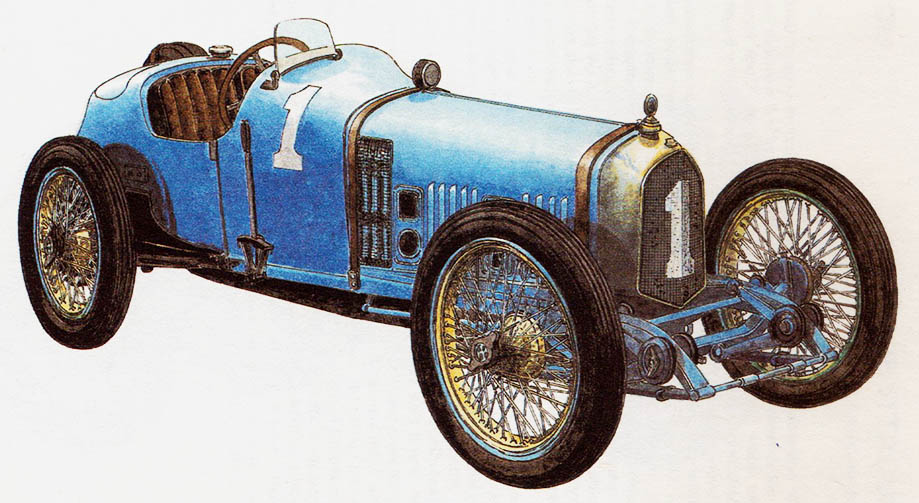BALLOT – year 1921
Ballot establishments, Paris, France.
In the first post-war years, some races successfully participated in older ones, four-cylinder models (np. Peugeot), but the advantage of more efficient six- and eight-cylinder engines began to show, already proven in aviation. At that time, the Ballot company aroused interest in its achievements, so far producing engines, and now also presenting new racing car models. They used eight-cylinder engines with a timing gear 2 x OHCs were created by assembling two four-cylinder blocks. They were constructed by the engineer Ernest Henry, already known from achievements in engine design at Peugeot. These cars were prepared at a great cost (120 thousand dollars) for races 500 miles Indianapolis w 1919 year. However, the best Ballot only took fourth place, despite Thomas hitting the lap record. Ballots were one of the fastest cars at the time, reaching maximum speed 190 km/h, and in years 1920-1921 broke racing track records.

Ballot establishments, Paris, France.
In the first post-war ACF Grand Prix race in 1921 In the year at Le Mans, the Ballot run by Ralph de Palma - an American of Italian origin took second place. The car was equipped with an eight-cylinder engine with a cylinder diameter 65 mm and piston stroke 112 mm. Each cylinder had two intake and two exhaust valves, controlled by two camshafts in the head. These shafts were driven by a system of cylindrical gears. Crankshaft, composed of four parts, it was arranged on five needle bearings. The novelty was that the pistons were made of light aluminum alloy. The three-liter engine achieved maximum power 93,4 kW (127 KM) by 3800 RPM. The mixture was prepared in two Claudel carburettors, and the ignition was from Bosch's magneto. Power was transferred from the already outdated cone clutch and four-speed gearbox to the rigid rear axle. The axles were suspended on semi-elliptical leaf springs and amortized with friction dampers. Mechanical servo brakes did not require a lot of force. The aerodynamically shaped body concealed a fuel tank and a spare wheel. A car weighing almost 900 kg reached the top speed 180 km/h.
W 1921 in the year the first Italian Grand Prix was held in Brescia, where the first two places were taken by Ballot cars.